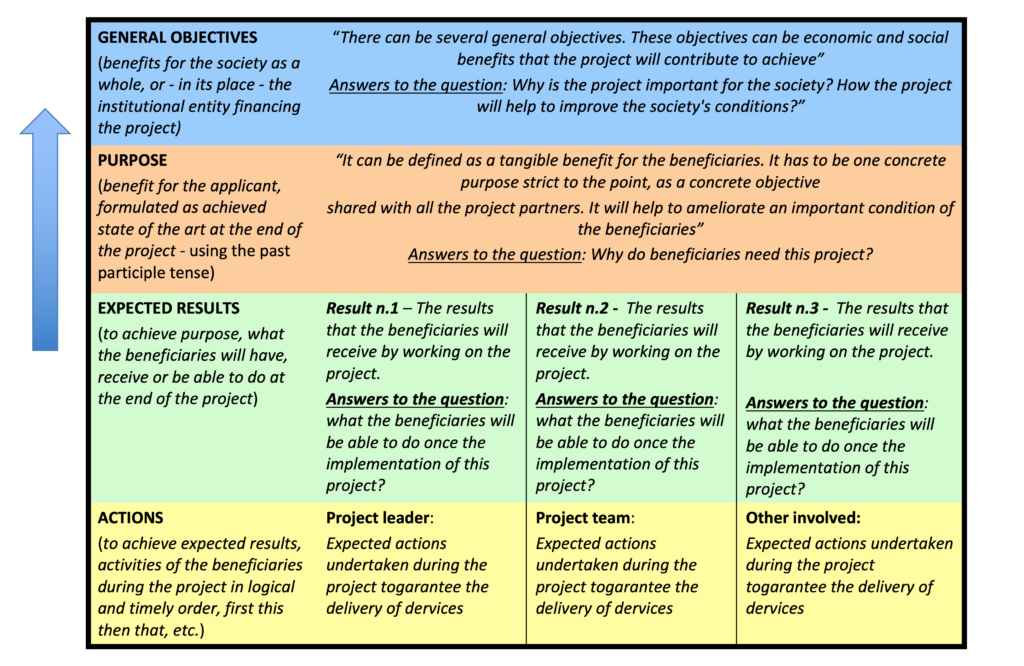Where to start?
Essential steps to build up your project
Elaborate a Logical Framework (logframe)
To have in mind a clear and well-defined methodological framework for the project planning is essential for different reasons:
1. It provides logicial structure
It offers a structured approach, ensuring projects have clear objectives, plans, and processes, reducing chaos and increasing efficiency.
2. It enhances consistency
It promotes consistent practices, making it easier to replicate successful project outcomes and learn from past mistakes.
3. It improves communication
It facilitates clear communication among team members, stakeholders, and ensures everyone is on the same page.
4. It helps decision-making
It guides informed decision-making with a team of more partners by providing a systematic way to analyze and address project issues.
5. It boosts Your Project Success
It increases the likelihood of project success by reducing risks and improving project control.
The Logical framework (log frame) matrix is a table that captures in a structured way the hierarchy of objectives and expected results of the action at impact, outcome, and output levels. The impact is the long-term expected effect of the action fulfilling the overall or general objectives. The outcomes are the mid-term expected effects of the action fulfilling the specific objective(s) or expected results. The links between each level are as important as the results, reflecting the intervention logic (theory of change) and the roles of providers and other stakeholders. The Logical framework (log frame) matrix can be used as a reporting tool for achieving the results during implementation. Values on indicators that measure the results can be regularly updated in the column foreseen for monitoring and reporting purposes (see “Current value”). Columns for intermediary targets could be added if needed.
Normally the logframe includes a set of hypotheses as in the table here above. The existence of hypotheses stems from the consideration that project interventions, often for lack of resources, the limited scope of application, limited time, and limited power or expertise of the actors, cannot operate in several sectors at the same time or influence external conditions, rules, laws, developments, events, etc. This means that to achieve certain objectives, the project must precisely “assume” that other conditions, absolutely external and independent from the project, will occur.
